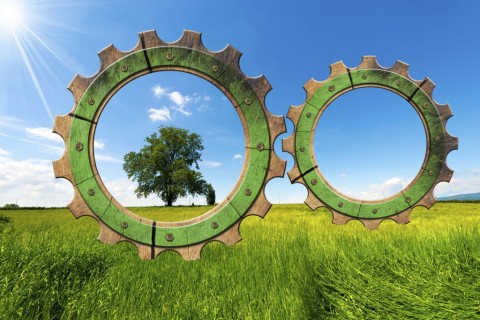In 2013, global aid organization Oxfam launched the Behind the Brands campaign, aimed at driving awareness about the sustainability practices of some of the world’s largest and most well-known consumer companies. Amplifying the voices of key stakeholders like farmers, consumers, and investors, the campaign called on big brands to take action to improve social and environmental standards in their supply chains. Three years later and some of these ‘Big 10’ food and beverage companies have made significant progress, as indicated in the changes to Oxfam’s scorecard ranking, but now the push is on to ensure their suppliers actually implement these promises. As of their 2016 update, Oxfam ranks the companies in this order:
| Position | Brand | Score |
| #1 | Unilever | 74% |
| #2 | Nestle | 69% |
| #3 | Coca-Cola | 57% |
| #4 | Kellogg’s | 53% |
| #5 (tie) | Mars | 49% |
| #5 (tie) | PepsiCo | 49% |
| #7 | Mondelez International | 41% |
| #8 | General Mills | 40% |
| #9 (tie) | Associated British Foods | 36% |
| #9 (tie) | Danone | 36% |
Scores are tallied based on points awarded for their practices in land rights, gender equality, farmers’ rights, living wages, climate change, transparency, and water resource management. Small steps have been made in many of these areas, but there is so much more that needs to be done—and a lot of questions as to how their supply chains will evolve to meet these growing sustainability commitments. Commitments like changes to commodity sourcing, asking suppliers to work with more small-scale farmers, ambitious greenhouse gas emissions targets, and enhanced global supply chain transparency. Consumer demand for these types of promises are growing, and companies will need to rapidly establish new business models in their supply chains in order to see continued growth and profitability. That means having complete visibility of their supply chains from suppliers through to customers. But only having eyes into your top tier suppliers isn’t enough anymore. You have to consider every node, every link in the value chain, if you are going to truly be able to deliver on sustainability objectives. How is something like that going to be possible? Through collaboration—not just across your own business functions, but with suppliers, distributors, and even customers. Changes like the ones required to meet new environmental standards and human rights objectives don’t happen overnight. They don’t happen in silos. And they don’t come without added cost. In many cases companies are investing millions into sustainability practices. That means have the ability within their supply chain to accurately evaluate trade-off decisions in a timely manner. You need to be able to look at the data in front of you in near real-time and determine which option strikes the best balance between profit and promise keeping. The road to global supply chain sustainability across all organizations is a long one, but it doesn’t have to be a lonely one. Remember, we’re all in this together—for better or worse we all share the same planet, so we’d best make the best of it.





Leave a Reply